Attention! The dust generated when brake pads wear out contains asbestos. hazardous to your health. Do not blow out the brakes with compressed air or inhale this dust. Before working on the brakes, clean them with a brake cleaner. We recommend that you wear a respirator when working on the brakes. Never use petroleum-based solvents to clean brake system components.
Note. This procedure applies to both front and rear disc brakes.
1. Remove the cap from the master brake cylinder reservoir.
2. Loosen the wheel nuts, raise the vehicle and support it on supports.
3. Remove the wheels Work in turn with the brake on one wheel only. The brake of the second wheel can serve to check the correct assembly of the assembly.
4. Carefully inspect the brake disc (see paragraph 5). If the disc needs to be reworked or replaced, see paragraph 5 for its removal. By this time, the calipers and pads should be removed from the vehicle.
Front brake pads
5. To ensure the possibility of installing new pads, sink the piston into the cylinder. This procedure is best done with a large clamp (pic. 3.5). As the piston is pressed into the cylinder, the brake fluid level in the master cylinder reservoir will rise. Do not allow the liquid to overflow from the edge of the tank. If necessary, immediately remove all traces of drunk brake fluid with a rag.

6. The further procedure for replacing the pads is detailed in Figure 3.6, a-p. Follow this sequence and be sure to read all the explanations for the figures. After you have completed the operations shown in the figures, go to step 14.
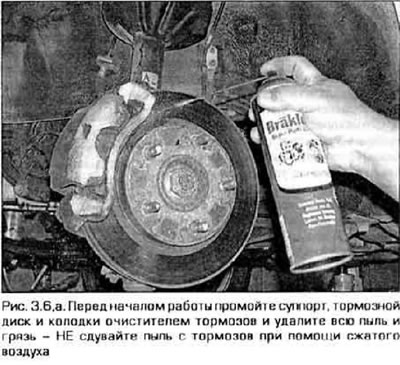 |  |
 |  |
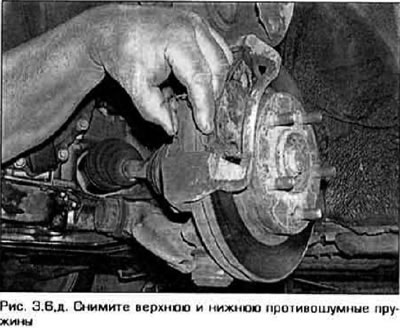 |  |
 |  |
 |  |
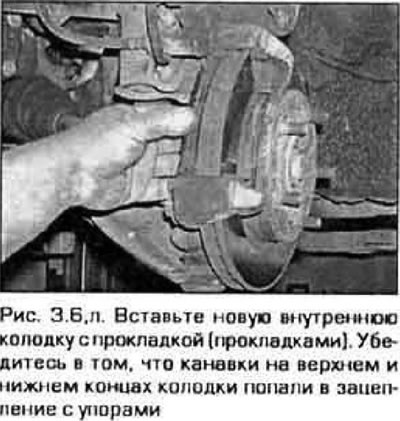 |  |
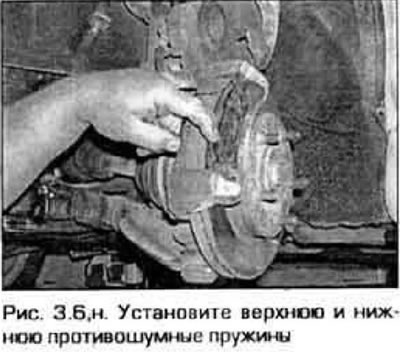 | 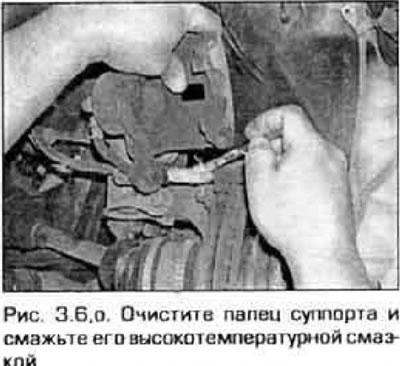 |
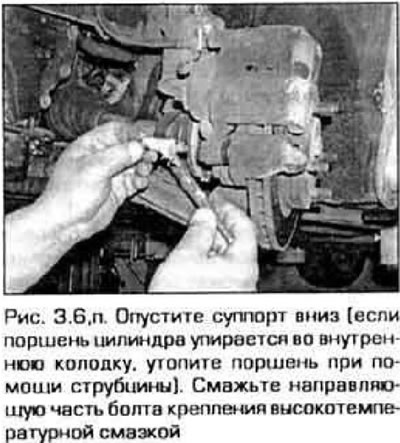 | 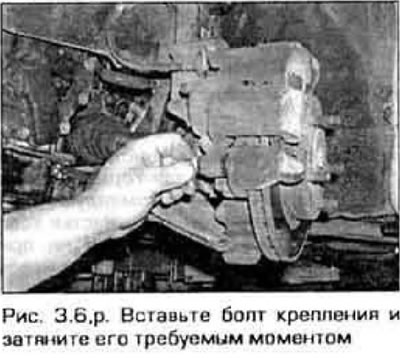 |
Rear brake pads
7. Wash the brake with a brake cleaner, then carry out the operations indicated in fig. 3.7.a-l. Follow this sequence and be sure to read all the explanations for the figures. After you complete all the indicated operations, go to step 8.
 |  |
 |  |
 | 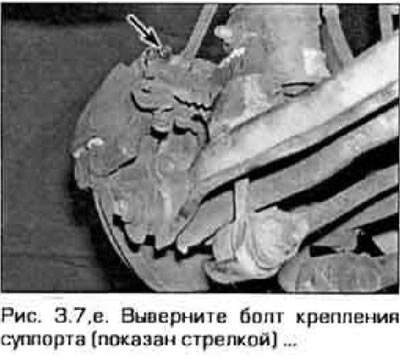 |
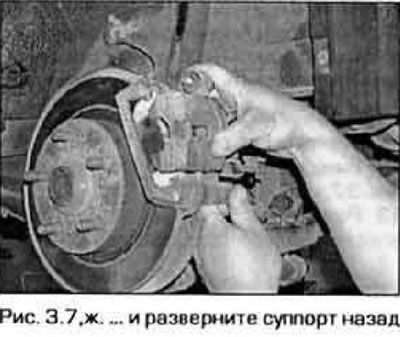 |  |
 |  |

8. Apply a little anti-noise mastic to the back of the new pads (according to manufacturer's recommendations) (fig 3.8).

9. Put gaskets on the pads.
10. Insert stops into caliper bracket. Apply some high temperature grease to them.
11. Insert the pads, spacers and anti-noise springs into the caliper bracket.
12. Reinstall the caliper, insert the mounting bolt and tighten it to the required torque. Turn the manual piston adjustment gear clockwise until the pads contact the brake disc (see fig. 3.7,d,e). Now turn the gear counterclockwise 1/3 of a turn Insert and tighten the locking bolt.
13. Connect the parking brake cable.
Front or rear pads
14. Put on the wheel and tighten the nuts of its fastening, lower the car and tighten the fastening nuts to the required torque (see technical data at the beginning of chapter 1).
15. Several times press and release a brake pedal that pads have touched a brake disk. Check the brake fluid level in the master cylinder reservoir and top up if necessary (see chapter 1).
16. Before leaving on the road, check the effectiveness of the brakes in a safe place.
